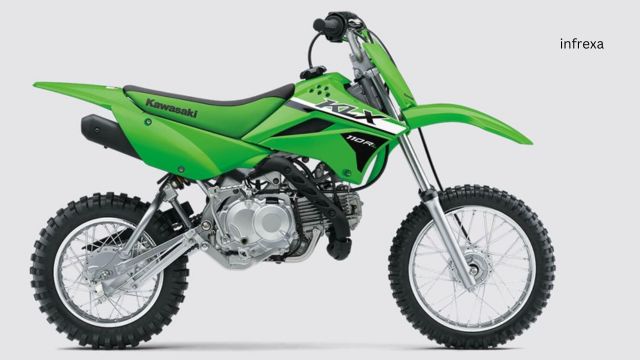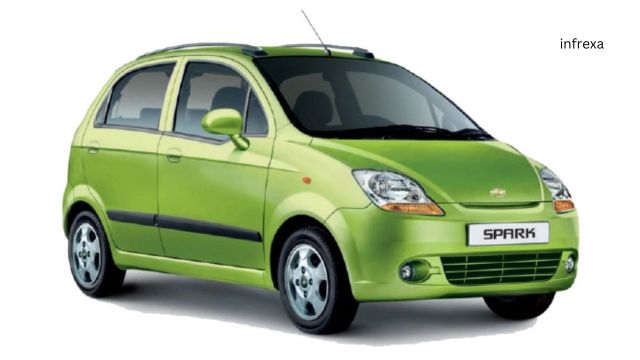Ever walked into a motorcycle showroom and been bombarded with terms like “150cc” or “600cc”? If you’re new to the world of bikes, these numbers might seem confusing.
What is CC? Full form
CC stands for Cubic Centimeters or simply cm3, which is a metric unit to measure the engine’s capacity or its volume.
It is also known as the engine displacement, which essentially means the total displacement of the pistons within the cylinder from the Top Dead Center (TDC) to the Bottom Dead Center (BDC) during one complete revolution.
Meaning of 110 CC in a Bike
The Kawasaki KLX 110 has a 110cc engine, which means the pistons move through a total volume of 110 cubic centimeters during one complete revolution. It’s a single-cylinder, four-stroke engine.
This means there’s one cylinder with a piston, and the combustion cycle involves four distinct strokes (intake, compression, combustion, and exhaust).

This bike produces approximately 7 horsepower, which represents the engine’s power output, and at 110cc, it’s relatively low compared to larger motorcycles.
CC in Cars
The engine volume is also measured in liters, corresponding to cubic centimeters. Liters (L) are a unit of volume commonly used in the metric system. One liter is equal to 1000 cubic centimeters (cm³).

In the case of cars, when the engine displacement exceeds 1000 cc, it is expressed in liters. For example, the Chevrolet Spark – 2022: This five-door hatchback offers a 1.4L engine.
Why does CC matter?
While not the only factor, CC plays a crucial role in several aspects of your motorcycle:
- Power: Generally, higher CC engines produce more power, allowing for faster acceleration and higher top speeds. However, this doesn’t always hold, as engine design and technology also play a part.
- Fuel efficiency: Bigger engines often consume more fuel than smaller ones. So, while a high-performance bike might be thrilling, it might also require more frequent trips to the gas station.
- Weight and handling: Larger engines tend to be heavier, which can affect the bike’s agility and handling characteristics. Smaller bikes may be easier to maneuver, especially for new riders.
- Price: As a rule, motorcycles with higher CC engines tend to be more expensive.
How do you choose the right CC for you?
The ideal CC for you depends on your individual needs and riding style. Consider factors like:
- Riding experience: Beginners might find smaller, lighter bikes easier to handle.
- Riding purpose: Commuting within the city might favor fuel-efficient, lower CC bikes, while highway cruising could benefit from more powerful options.
- Budget: Remember, higher CC often translates to a higher price tag.
How to calculate cc?
Calculating engine displacement, or cc (cubic centimeters), means figuring out how much space the engine’s cylinders take up. Here’s an easy way to do it:
Engine Displacement (cc) = Bore Area × Stroke Length × Number of Cylinders
Where:
- Bore Area: The size of the cylinder’s opening (you get this by multiplying π (pi) by the square of the cylinder’s radius) in square centimeters (cm²).
- Stroke Length: How far the piston moves inside the cylinder, from top to bottom, in centimeters (cm).
- Number of Cylinders: How many cylinders the engine has.
Question: Let’s say you have an engine with a bore diameter of 5 centimeters and a stroke length of 8 centimeters, and it has 4 cylinders. Find the CC of the engine.
Solution:
From above,
We have Stroke length and the Number of Cylinders that we can put directly in the above formula. But we do not have the Bore Area; instead, we have the Bore Diameter in the question.
Let’s find the bore area,
We know, Area = π × r2
We also know that Radius (r) = Diameter ÷ 2. Means (5 cm/2 = 2.5 cm).
Therefore, Bore Area= π x (2.5)2 = 19.63 cm2
Now put the value in the main formula: i.e, Engine Displacement (cc) = Bore Area × Stroke Length × Number of Cylinders
cc = 19.63 cm2 x 8 cm x 4
= 628 cm3
So, the engine displacement of this hypothetical engine is approximately 628.16 cubic centimeters (cc).
Top contenders for the highest CC bike in the USA
1. Kawasaki Ninja H2R
This track-only monster maintains its top spot with a mind-blowing 998cc supercharged engine, generating a claimed 310 horsepower. However, it’s not street-legal in the USA.
2. Arch Motorcycle KRGT-1
This American-made powerhouse boasts a massive 2343cc V-twin engine, delivering raw power and head-turning aesthetics.
- Power: Over 200 horsepower (estimated)
- Price: Starting at $85,000 (customizable)
3. Victory Vision Tour
This luxury touring motorcycle, although discontinued in 2017, still holds a significant presence in the high-displacement category with its 1731cc V-twin engine.
- Power: 106 horsepower
- Price: Varies depending on used market conditions
4. Harley-Davidson CVO Road Glide
This touring bike pushes the limits for Harley with its 1801cc Milwaukee-Eight engine, offering a blend of American muscle and touring comfort.
- Power: 117 horsepower
- Price: Starting at $41,599
5. Indian Challenger Dark Horse
This cruiser from Indian Motorcycles packs a punch with its 1811cc PowerPlus engine, designed for powerful performance and head-turning style.
- Power: 173 horsepower
- Price: Starting at $29,999
My words
Understanding CC in motorcycles is essential for making informed decisions when purchasing or evaluating bikes. It serves as a crucial metric for assessing a bike’s power, performance, and overall capability on the road.
Read these also:




